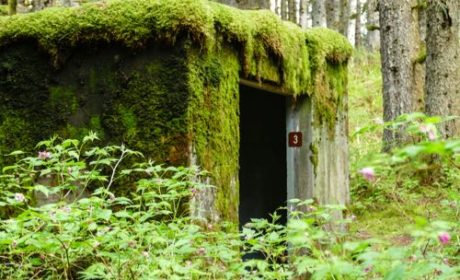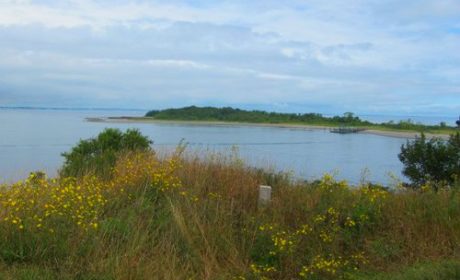Are you interested in visiting Plymouth, MA? It’s an easy day trip from Boston that is filled with American history that takes you back to the time of the pilgrims. And, of course, there’s the historic Plymouth rock to see.
Cheryl Maguire offers tips for a one-day itinerary to Plymouth from Boston. Or make Plymouth part of your Massachusetts early American road trip. It’s an historic town that’s well worth a visit!
Table of Contents
How to visit Plymouth, Massachusetts
You don’t have to be a history buff to enjoy all Plymouth, Massachusetts has to offer. Located 40 miles south of Boston, Plymouth is one of America’s first towns. It was named after Plymouth, Devon England due to the physical similarity.
The downtown area along the Plymouth Bay offers scenic water views while you shop or dine in one of the many restaurants. Be sure to check the calendar for special events such as the Plymouth Ice Festival, Art in the Park, concerts in Kellogg Park all summer long, Fall Festival and Santa’s Arrival.
Inspecting Plymouth Rock

Plymouth Rock is located in Pilgrim Memorial State Park, near the Mayflower II and the Brewster Gardens. The park has picturesque views of Plymouth Harbor and the Mayflower II.
Most people who see Plymouth Rock are disappointed with the small size, but it is still viewed by more than 1 million people per year. There isn’t any evidence Plymouth Rock was the actual stepping stone for the Pilgrims but it was identified for being the spot by Thomas Faunce whose father arrived in Plymouth on the original Mayflower.
Exploring Plimoth Plantation

Plimoth Plantation offers you a chance to experience life in the 17th century. There is a recreation of an English village built by Pilgrims as well as a Wampanoag Homesite.
The Pilgrims are actors dressed in costumes and they speak with accents. The Pilgrims fully immerse themselves into their roles and will answer questions based on how their character would answer that they are impersonating. They use both documented facts about their character (a real historical person) along with general information about the time period.

The Wampanoag Homesite staff are not actors. They are either Wampanoag or from another Native Nation. They also will answer questions about their culture but from a present day perspective.
Some of the staff demonstrate how to play an ancient tribal game hubbub which is still played today. Other staff reenact different types of cooking and food they ate.

You could easily spend an entire day talking to Pilgrims and Wampanoag people, wandering through the various refabricated homes and learning about the 17th century history.

Visiting Mayflower II
Mayflower II is a part of Plimoth Plantation museum located in downtown Plymouth, about a 10 minute drive from the main location. The boat is a full-scale reproduction of the ship which brought the Pilgrims to Plymouth in 1620.
This replica was built in 1955-1956 in England and is an actual working ship that sailed to Plymouth, MA. Similar to the English village, there are actors aboard the ship to recreate the experience of the 17th century and answer questions.
Stopping at Plimoth Grist Mill

Plimoth Grist Mill is also a part of Plimoth Plantation museum, located a short walk from the Mayflower II. The mill is a replication of the original Jenney Grist Mill used by the Pilgrims in 1636 for grinding corn. It is powered by water.
Inside the museum you can grind corn and sift it to make cornmeal. There is a small water wheel to see how it works and you can interact with it.
Strolling through Brewster Gardens

Brewster Gardens is located outside of the Plimoth Grist Mill. It is a beautiful stroll through the gardens back to the waterfront area. The Town Brook stream runs throughout the garden and is used by the Grist Mill.
In the 17th century the stream provided drinking water for the Pilgrims. The park contains a statue of The Pilgrim Maiden by Henry Hudson Kitson (1922) and The Immigrant Memorial by artist Barney Zeitz (2001) in honor of the Pilgrim settlers.
Boomer Travel Tip
Interested in checking out Plymouth Plantation? Check out a list of hotels in Plymouth, Massachusetts.
Frequent asked questions
You can get a discounted Plimouth Plantation visitors pass from the library if you have a library card or know someone who does. Every year the Highland Foundation offers one Friday (date varies every year) when admission is free to everyone for Plimoth Planation, Mayflower II and Plimoth Grist Mill.
There are many significant historical buildings and museums to explore beyond Plymouth Plantation, Plymouth Rock and Mayflower II. If you have the time, Jenney Museum, Pilgrim Hall Museum, Brewster Gardens and Burial Hill are worth a visit.
You’re here so you might as well see it. However a quick look-see at the rock (no, the Pilgrim’s didn’t actually step on it) is all the time you need.
You can easily explore the area on a day trip from Boston. However history fans should allot more time for a thorough visit.
Summer months, June through August, offer the best weather, but they are also the most crowded. May or September are good alternatives.
Plymouth, located 40 miles south of Boston, is about a one hour drive.
There are plenty of Bed and Breakfast or hotels to stay in if you plan an overnight visit.
There are two public beaches, Plymouth Beach and White Horse Beach.
While visiting the Boston area, here are two more off-the-beaten-path things to do:




